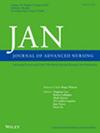重症监护病房的药物血流动力学管理:50年来护士角色的演变
IF 3.4
3区 医学
Q1 NURSING
引用次数: 0
摘要
目的探讨重症监护护士在药物血流动力学管理中的角色从1975年到2025年的演变,并探讨到2075年的预计责任。学术评论。方法对1975-2025年间的文献、历史记录和临床指南进行批判性综合,重点关注危重病护理药理学的护理实践、技术、劳动力动态和患者安全。检索了1975 - 2025年间的cinahl、PubMed、EBSCO、Embase、Cochrane、谷歌Scholar和主要药理学指南库,包括临床试验、系统综述、立场论文和定性研究。结果护士已经从不规范的血管活性药物滴定发展到先进的、协议驱动的多模式血管加压策略。里程碑包括早期儿茶酚胺时代,护士主导的败血症方案和当代采用外周血管加压实践的技术支持。展望未来,重症监护护士将越来越多地监督技术驱动的滴定,管理多模式方案,解决药物短缺问题,并在劳动力压力下保持复原力。结论:在过去的50年里,护士已经改变了血管加压素管理,并且在将创新与道德、以患者为中心的护理联系起来方面仍然至关重要。未来50年将需要先进的决策,技术流畅性和对护理人员的更好支持。对职业和/或患者护理的影响基于模拟的教育、劳动力支持和道德框架的投资对于准备护士扩大职责和确保患者安全至关重要。影响问题解决的历史变异性和未来的挑战,在护理角色的血管加压管理。护士推动了安全和创新,并将面临越来越多的技术、道德和劳动力需求。影响相关的重症护理护士,护士教育家,护士领导和政策制定者塑造全球未来的重症护理实践。本文章由计算机程序翻译,如有差异,请以英文原文为准。
Pharmacological Haemodynamic Management in the Intensive Care Unit: The Evolution of the Nurse's Role Over 50 Years
AimTo examine the evolution of intensive care nurses’ roles in pharmacological haemodynamic management from 1975 to 2025 and to explore projected responsibilities through 2075.DesignA scholarly commentary.MethodsA critical synthesis of literature, historical accounts and clinical guidelines spanning 1975–2025, focussing on nursing practice, technology, workforce dynamics and patient safety in critical care pharmacology.Data SourcesCINAHL, PubMed, EBSCO, Embase, Cochrane, Google Scholar and major pharmacological guideline repositories were searched for sources between 1975 and 2025, including clinical trials, systematic reviews, position papers and qualitative studies.ResultsNurses have progressed from unstandardised vasoactive medication titration to advanced, protocol‐driven multimodal vasopressor strategies. Milestones include the early catecholamine era, nurse‐led sepsis protocols and contemporary adoption of peripheral vasopressor practices supported by technology. Looking ahead, intensive care nurses will increasingly supervise technologically driven titration, manage multimodal regimens, address drug shortages and sustain resilience amid workforce pressures.ConclusionOver the past five decades, nurses have transformed vasopressor management and remain essential in bridging innovation with ethical, patient‐centred care. The next 50 years will require advanced decision‐making, technological fluency and improved support for the nursing workforce.Implications for the Profession and/or Patient CareInvestment in simulation‐based education, workforce supports and ethical frameworks is vital to prepare nurses for expanding responsibilities and ensure patient safety.ImpactProblem addressedHistorical variability and future challenges in nursing roles for vasopressor management.Main findingsNurses have driven safety and innovation and will face increasing technological, ethical and workforce demands.ImpactRelevant to critical care nurses, nurse educators, nurse leaders and policy‐makers worldwide shaping the future of critical care practice.
求助全文
通过发布文献求助,成功后即可免费获取论文全文。
去求助
来源期刊
CiteScore
6.40
自引率
7.90%
发文量
369
审稿时长
3 months
期刊介绍:
The Journal of Advanced Nursing (JAN) contributes to the advancement of evidence-based nursing, midwifery and healthcare by disseminating high quality research and scholarship of contemporary relevance and with potential to advance knowledge for practice, education, management or policy.
All JAN papers are required to have a sound scientific, evidential, theoretical or philosophical base and to be critical, questioning and scholarly in approach. As an international journal, JAN promotes diversity of research and scholarship in terms of culture, paradigm and healthcare context. For JAN’s worldwide readership, authors are expected to make clear the wider international relevance of their work and to demonstrate sensitivity to cultural considerations and differences.

 求助内容:
求助内容: 应助结果提醒方式:
应助结果提醒方式:


